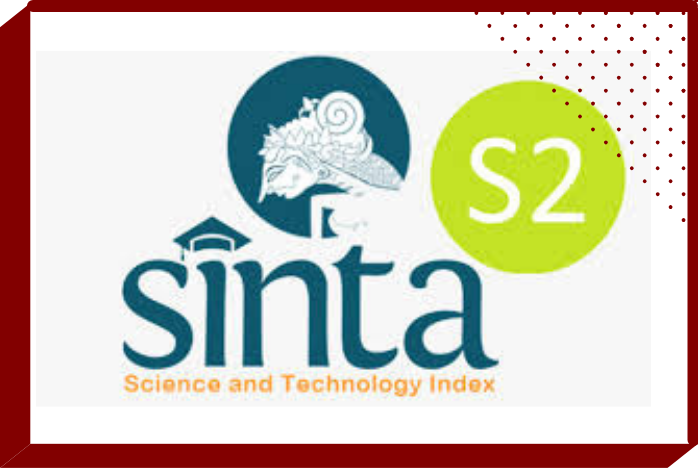Anjing Menggonggong Muazin Berlalu: Toa Masjid, Gus Yaqut, dan Semiotika Morris
 Abstract views: 1239
,
Abstract views: 1239
,
 PDF downloads: 951
PDF downloads: 951
Abstract
Gus Yaqut's statement regarding Surat Edaran Nomor 5 Tahun 2022 tentang Pedoman Penggunaan Pengeras Suara di Masjid dan Musala garnered controversy. The reason is that the Minister of Religion of the Republic of Indonesia is considered to be comparing the call to prayer with the barking of dogs. The public reacted: the chairman of GP Ansor was accused of blasphemy against Islam. This study examines the statement of the Minister of Religion of the Republic of Indonesia using the Piercian semiotic approach. Using Morris's scheme of sign systems, this study examines verbal-linguistic facts that are considered fatal. The research method used is qualitative with a note-taking technique. The results of the data analysis are described descriptively. The research data in the form of syntagms were tested as semiotic facts, both grammatically and pragmatically meaningful. The results showed that from the three categories of Morris semiotics (syntax, semantics, and pragmatics) which were operationalized in the statement of the Minister of Religion of the Republic of Indonesia, there was no fact of blasphemy. The syntactic relation between “adhan” and “dog barking” is a grammatical construction as an analogy which in public rhetoric is used to express “audiotive noise” in society. The analogy is not a comparison (binary) to make an alignment but concretizes a statement so that the message is understood easily by the recipient of the message. The analogy is carried out so that the substance of the Circular Letter of the Minister of Religion of the Republic of Indonesia is accepted by the public. Meanwhile, the facts that have happened show that the opposite confirms that the language entity in the community is very dynamic, wild, and sometimes acrobatic from the initial goal.
Downloads
References
Ahmad, M. (2022). Gonggongan Anjing, Hanyalah Qiyasi - UIN Sunan Kalijaga.
Arikunto, S. (2011). Prosedur Penelitian: Suatu Pendekatan Praktik. Jakarta: Rineka Cipta.
Bernard Walliser, Hervé Zwirn, D. Z. (2017). Reasoning by Analogy. Research Gate, 125–135.
Budiman, K. (2011). Semiotika Visual: Konsep, Isu, dan Problem Ikonisitas (Vol. 1). Yogyakarta: Jalasutra.
Chafidzoh, T. F. (2020). Representasi Visual dan Verbal Iklan Mobil “FORD” pada Koran Arab Digital (Semiotik Charles Morris). JURNAL Al-AZHAR INDONESIA SERI HUMANIORA, 5(4), 174.
Chandler, D. (2003). Semiotics: The Basics. Routledge.
Fadhilasari, I., & Ningtyas, G. R. (2021). Eufemisme dan Disfemisme dalam “Surat Terbuka Kepada DPR-RI” Narasi TV: Tinjauan Semantik. Jurnal Bahasa Dan Sastra, 9(3).
Hanggoro, H. T. (2018). Awal Mula Pengeras Suara di Masjid - Historia.
Ilmi, M. (2021). Tinjauan Hukum Islam Terhadap Implementasi Surat Edaran Direktur Jenderal Bimbingan Masyarakat Islam No.B.3940/Dj.Iii/Hk.007/08/2018 Tentang Pengeras Suara Azan di Masjid, Langgar Atau Musala. Universitas Islam Negeri Raden Intan Lampung.
Irmayanti, M. (2017). Profesionalisme Jurnalis Media Online: Analisis dengan Menggunakan Semiotika Charles Morris. Jurnal Komunikasi Indonesia, 3(2), 141–149.
Khoeroen, M. (2022). Surat Edaran Menteri Agama No SE 05 tahun 2022 tentang Pedoman Penggunaan Pengeras Suara di Masjid dan Musala. Kementian Agama RI, 1–4.
Luma, D. Y., & Sulistyawati, R. (2022). Analisis Wacana Kritis Teun A. Van Dijk dalam Pernyataan Menteri Agama Tentang Aturan Pengeras Suara Masjid. Jurnal Ilmiah Wahana Pendidikan, 8(13), 177–189.
Morris, C. W. (1938). Foundations of the Theory of Signs (Vol. 1; O. Neurath, Ed.). Chicago, Illinois: The University of Chicago Press.
Panshaiskpradi, P. (2019). Resepsi Khalayak Mengenai Tarhim: Analisis Resepsi pada Masyarakat di Lingkungan Masjid Ar-Rahmah Cibiru Kota Bandung.
Rahman, N. I. Z. (2019). Kontroversi Cuitan Menteri Agama RI Mengenai Regulasi Penggunaan Pengeras Suara Rumah Ibadah Umat Islam: Analisis Wacana Kritis van Dijk. Seminar Tahunan Linguistik (SETALI) 2019. Bandung: UPI Press.
Sudaryanto. (1993). Metode dan Aneka Teknik Analisis Bahasa: Pengantar Penelitian Wahana Kebudayaan Secara Linguistis (xiv). Yogyakarta: Duta Wacana University Press.
Sugiyono. (2014). Metode Penelitian Kuantitatif, Kualitatif dan R & D. Bandung: Alfabeta.
Surah Luqman ayat 19. (n.d.).
TvOne. (2022). Menag Atur Toa Masjid, Gonggongan Anjing Jadi pembanding | Dua Sisi tvOne - YouTube.
Umairoh, S. U. (2022). Analisis Semiotika Charles Morris Terhadap Lagu “Sayyidi Ar-Rais” Karya Hama Meshary Hamada. Majalah Ilmiah Tabuah: Ta`limat, Budaya, Agama dan Humaniora, 26 (1), 40–47.
van Dijk, K. (2009). Perubahan Kontur Masjid . In P. J. M. Nas (Ed.), Masa Lalu dalam Masa Kini: Arsitektur di Indonesia. Jakarta: PT Gramedia Pustaka Utama.
VIVA.CO. (2022). Kontroversi Menag Yaqut, Hadiah untuk NU hingga Gonggongan Anjing - YouTube.
Yuliana, N., & Atikurrahman, M. (2022). Ibu Kota Negara yang (tak) Dirindukan: Kendi Nusantara, Jawaisme Jokowi, dan Semiologi Barthesian. Urnal Ilmiah FONEMA : Jurnal Edukasi Bahasa dan Sastra Indonesia, 5(2), 104–128.
Copyright (c) 2023 GHANCARAN: Jurnal Pendidikan Bahasa dan Sastra Indonesia

This work is licensed under a Creative Commons Attribution-ShareAlike 4.0 International License.
Ghancaran: Jurnal Pendidikan Bahasa dan Sastra Indonesia uses an Open Access Policy under the Creative Commons Attribution-ShareAlike 4.0 International License. Authors publishing in this journal agree to the following terms:
- Ghancaran Journal holds the copyright and grants the journal rights for first publication with the work simultaneously licensed under a

The work is distributed under Creative Commons Attribution-ShareAlike 4.0 International License which allows others to share, copy, and redistribute the material in any media or format and adapt, remix, change, and develop the material even for commercial purposes, as long as it is stated credit and license derivative works under similar terms. - Authors may make additional contractual arrangements for non-exclusive distribution of the journal's published work version.
- Authors are permitted to post their work online (e.g., in institutional repositories or on their websites) before and during submission, as doing so may lead to productive exchange.



















